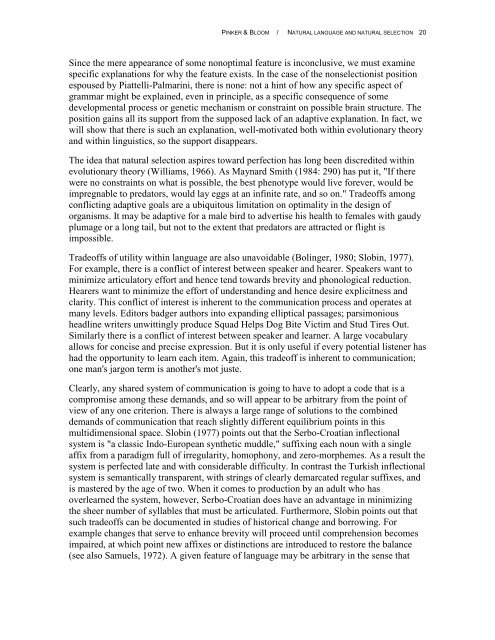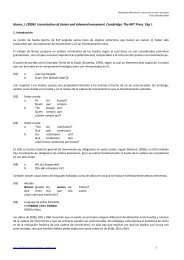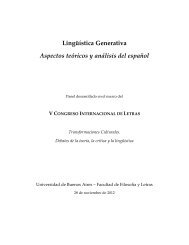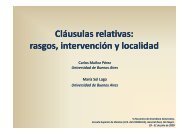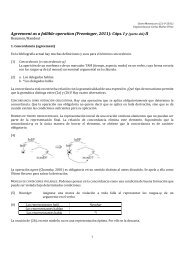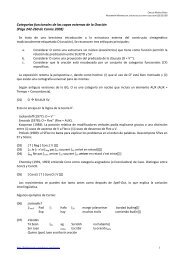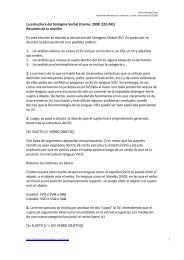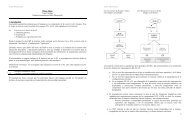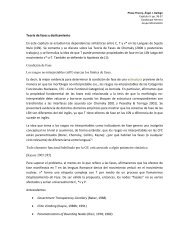Pinker - Bloom - NATURAL LANGUAGE AND NATURAL SELECTION
Pinker - Bloom - NATURAL LANGUAGE AND NATURAL SELECTION
Pinker - Bloom - NATURAL LANGUAGE AND NATURAL SELECTION
You also want an ePaper? Increase the reach of your titles
YUMPU automatically turns print PDFs into web optimized ePapers that Google loves.
PINKER & BLOOM / <strong>NATURAL</strong> <strong>LANGUAGE</strong> <strong>AND</strong> <strong>NATURAL</strong> <strong>SELECTION</strong> 20<br />
Since the mere appearance of some nonoptimal feature is inconclusive, we must examine<br />
specific explanations for why the feature exists. In the case of the nonselectionist position<br />
espoused by Piattelli-Palmarini, there is none: not a hint of how any specific aspect of<br />
grammar might be explained, even in principle, as a specific consequence of some<br />
developmental process or genetic mechanism or constraint on possible brain structure. The<br />
position gains all its support from the supposed lack of an adaptive explanation. In fact, we<br />
will show that there is such an explanation, well-motivated both within evolutionary theory<br />
and within linguistics, so the support disappears.<br />
The idea that natural selection aspires toward perfection has long been discredited within<br />
evolutionary theory (Williams, 1966). As Maynard Smith (1984: 290) has put it, "If there<br />
were no constraints on what is possible, the best phenotype would live forever, would be<br />
impregnable to predators, would lay eggs at an infinite rate, and so on." Tradeoffs among<br />
conflicting adaptive goals are a ubiquitous limitation on optimality in the design of<br />
organisms. It may be adaptive for a male bird to advertise his health to females with gaudy<br />
plumage or a long tail, but not to the extent that predators are attracted or flight is<br />
impossible.<br />
Tradeoffs of utility within language are also unavoidable (Bolinger, 1980; Slobin, 1977).<br />
For example, there is a conflict of interest between speaker and hearer. Speakers want to<br />
minimize articulatory effort and hence tend towards brevity and phonological reduction.<br />
Hearers want to minimize the effort of understanding and hence desire explicitness and<br />
clarity. This conflict of interest is inherent to the communication process and operates at<br />
many levels. Editors badger authors into expanding elliptical passages; parsimonious<br />
headline writers unwittingly produce Squad Helps Dog Bite Victim and Stud Tires Out.<br />
Similarly there is a conflict of interest between speaker and learner. A large vocabulary<br />
allows for concise and precise expression. But it is only useful if every potential listener has<br />
had the opportunity to learn each item. Again, this tradeoff is inherent to communication;<br />
one man's jargon term is another's mot juste.<br />
Clearly, any shared system of communication is going to have to adopt a code that is a<br />
compromise among these demands, and so will appear to be arbitrary from the point of<br />
view of any one criterion. There is always a large range of solutions to the combined<br />
demands of communication that reach slightly different equilibrium points in this<br />
multidimensional space. Slobin (1977) points out that the Serbo-Croatian inflectional<br />
system is "a classic Indo-European synthetic muddle," suffixing each noun with a single<br />
affix from a paradigm full of irregularity, homophony, and zero-morphemes. As a result the<br />
system is perfected late and with considerable difficulty. In contrast the Turkish inflectional<br />
system is semantically transparent, with strings of clearly demarcated regular suffixes, and<br />
is mastered by the age of two. When it comes to production by an adult who has<br />
overlearned the system, however, Serbo-Croatian does have an advantage in minimizing<br />
the sheer number of syllables that must be articulated. Furthermore, Slobin points out that<br />
such tradeoffs can be documented in studies of historical change and borrowing. For<br />
example changes that serve to enhance brevity will proceed until comprehension becomes<br />
impaired, at which point new affixes or distinctions are introduced to restore the balance<br />
(see also Samuels, 1972). A given feature of language may be arbitrary in the sense that


